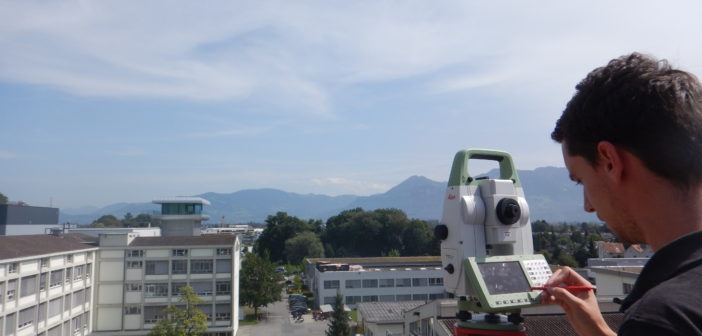To measure with high precision and reliability, total stations must fulfil specific accuracy requirements. To be sure that a total station fulfils these requirements at any time, it has to be re-calibrated from time to time. All offered Leica Geosystems total stations – manual and robotic – and MultiStations offer users the possibility to do a calibration on their own. The procedure is very simple and can be done within some minutes. Nevertheless, it is necessary to do a user calibration always with adequate care. In this Q&A Gerhard Kleemaier, Product Engineer for total stations at Leica Geosystems in Heerbrugg, Switzerland explains how it works and how simple it is.
Gerhard, why do total stations need a user calibration from time to time?
Total stations from Leica Geosystems are worldwide known for their highest precision, reliability and durability. Leica Geosystems instruments are manufactured, assembled and adjusted with the highest possible quality. Even the most careful and precise assembly process, however, can result in small deviations which can lead to so called instrument errors. At the end of the Leica Geosystems’ manufacturing process, instrument errors are carefully determined and adjusted so that the measurement results are correct and reliable. Due to stress, such as temperature changes, shock or vibrations, instrument errors can change slightly over time. To guarantee the best measurement performance, these errors, and therefore the correction values, have to be re-determined and set in the instrument from time to time. This procedure, called user calibration, can be done by the user.
Does every instrument have to be sent to service for regular re-calibration?
No, fortunately sending back instruments for regular re-calibration is not necessary. All total stations and MultiStations, offered by Leica Geosystems can be re-calibrated by the user. The user calibration feature is called “Check & Adjust” or just “Adjust” depending on the field software.

Within Leica Captivate the user calibration function can be found in Settings > TS Instrument > Check & Adjust.

On instruments running with Leica FlexField, the user calibration feature is started by clicking on Tools > Adjust.
The following video shows, how the Check & Adjust routine works on total stations and MultiStations powered by Leica Captivate. Nevertheless, as the functions work very similar in Leica SmartWorx Viva or Leica FlexField the video is also helpful for their users. Furthermore, it also gives recommendations and hints for a good use of Check & Adjust.
How does user calibration work?
There are different Check & Adjust procedures. All of them work as guided workflows and are very simple to use. If they are followed carefully and precisely, the parameters will be correctly determined by the instrument itself. The instrument does a validity check of the calibration values and warns the user in case of any abnormality. The calibration values will be stored in the instrument and automatically applied to all subsequent measurements when the tilt compensator and horizontal corrections are activated. Additionally, it is possible to create a report after every calibration to have the calibration values documented, for quality assurance purposes for example.
How often does a total station need to be calibrated by the user?
It is recommended to do a user calibration on a regular basis, every three to six months. A reminder can be set within the Check & Adjust routine.
In addition, the calibration routines should be executed in the following cases:
• Before the first use
• Before every high precision survey
• After rough or long transportation
• After long working periods
• After long storage periods
• If the temperature difference between current environment and the temperature at the last calibration is more than 20° Celsius.
Gerhard, thank you for sharing your insights with us.
Thank you, the pleasure is mine.

Gerhard Kleemaier
Product Engineer
Leica Geosystems AG, Heerbrugg, Switzerland














